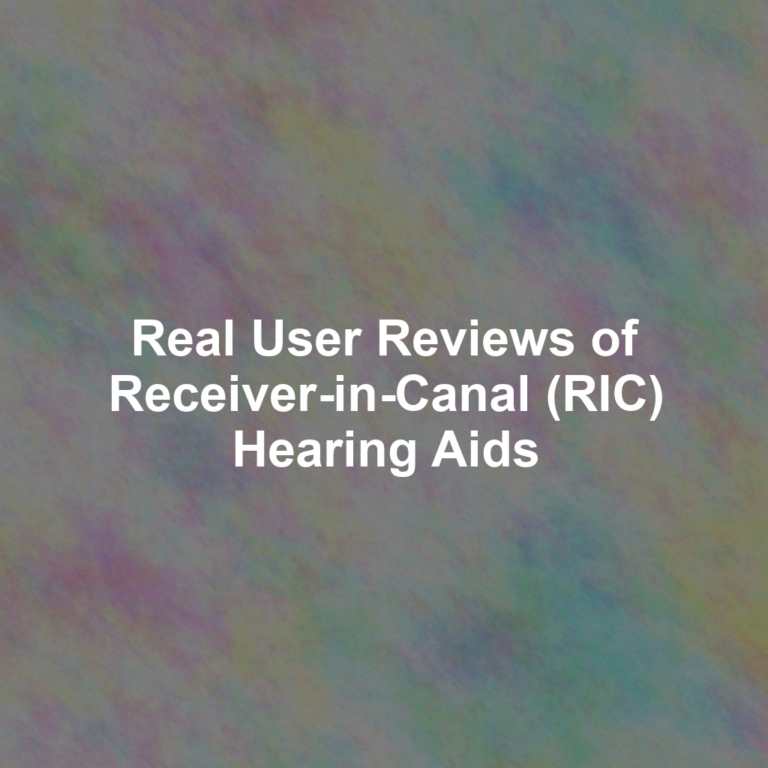In the present-day, ever-evolving healthcare industry, prioritising performance improvement is crucial for enhancing the overall care journey that patients experience. By focusing on optimising operational processes, elevating patient outcomes, and empowering healthcare professionals, performance improvement initiatives can have a significant impact on patient care and the comprehensive delivery of healthcare services. This article explores the profound importance of performance improvement throughout the care journey and investigates its various essential components.
Discover Why Performance Improvement Matters in Healthcare
Performance improvement in healthcare embodies a systematic strategy aimed at identifying areas requiring enhancement, executing necessary changes, and tracking ongoing progress to elevate the quality and efficiency of care delivery. This ongoing process is designed to guarantee the best possible outcomes for patients while maximising the utilisation of resources available within the healthcare system, ultimately leading to improved patient satisfaction and safety.
Uncover the Numerous Benefits of Performance Improvement in Healthcare

Implementing effective performance improvement strategies in healthcare can yield a multitude of benefits, including:
- Enhanced Patient Safety: Performance improvement initiatives focus on identifying and addressing potential risks and errors that may arise during patient care. By adopting evidence-based practices and established protocols, healthcare organisations can significantly reduce adverse events, prevent medical errors, and ultimately enhance the overall safety and wellbeing of patients.
Improving patient safety is a vital aspect of performance improvement in the healthcare sector. By meticulously analysing data related to safety incidents and pinpointing potential risks, healthcare organisations can introduce evidence-based practices and protocols designed to mitigate adverse events. These measures may include medication reconciliation, implementing stringent infection control protocols, and standardising patient safety procedures. By proactively addressing safety concerns, healthcare providers can significantly enhance patient safety and minimise the risk of harm, fostering a secure environment for all patients.
- Improved Quality of Care: A primary objective of performance improvement is to optimise healthcare processes to ensure high-quality care delivery. By consistently monitoring and evaluating patient outcomes, healthcare providers can identify specific areas needing enhancement and implement evidence-based practices that elevate the overall quality of care delivered.
Enhancing the quality of care provided is a foundational goal of performance improvement initiatives within the healthcare sector. To achieve this, healthcare organisations collect and analyse comprehensive data related to patient outcomes, satisfaction levels, and adherence to established clinical guidelines. By identifying areas that fall short of desired outcomes, organisations can implement necessary process improvements and adopt evidence-based practices to elevate the quality of care. This may include the introduction of clinical decision support systems, standardising care protocols, and fostering interdisciplinary collaboration. By continuously striving for enhancements, healthcare providers can significantly improve patient outcomes and ensure the delivery of high-quality care consistently.
- Increased Cost Efficiency: Performance improvement initiatives empower healthcare organisations to identify inefficiencies within their operations and streamline processes, ultimately leading to substantial cost savings. By eliminating unnecessary tests, reducing hospital readmissions, and optimising resource allocation, performance improvement can facilitate cost-effective care delivery without compromising quality.
Achieving cost efficiency is a critical facet of performance improvement in healthcare. By meticulously analysing data surrounding resource utilisation, healthcare organisations can pinpoint inefficiencies and areas requiring enhancement. This might involve strategies such as reducing unnecessary diagnostic tests, improving care coordination to lower hospital readmissions, and optimising staffing levels. By streamlining processes and eliminating waste, healthcare providers can deliver cost-effective care without sacrificing the quality of services offered, ensuring that resources are utilised wisely and effectively.
- Enhanced Patient Experience: By prioritising performance improvement, healthcare organisations can create patient-centred care models. This approach involves enhancing communication and engagement with patients, minimising waiting times, and personalising care to cater to the unique needs of each individual, resulting in an overall improved patient experience.
Improving the patient experience is a significant aim of performance improvement initiatives within the healthcare sector. By actively involving patients in their care journey, healthcare organisations can enhance communication and engagement. This may include implementing patient portals for secure communication, reducing waiting times for appointments and procedures, and tailoring care plans to align with individual preferences and requirements. By prioritising patient-centred care, healthcare providers can foster a positive and fulfilling experience for patients, ultimately leading to better outcomes and satisfaction.
Identify the Essential Components of Effective Performance Improvement
To successfully enhance patient care, performance improvement initiatives generally encompass the following essential components:
1. Comprehensive Data Collection and Analysis
Collecting and analysing data is a fundamental step in the performance improvement process. Healthcare organisations gather data on diverse aspects of care delivery, including patient outcomes, safety incidents, and process efficiency. Through systematic analysis of this data, healthcare professionals can identify specific areas requiring improvement, establish measurable goals, and diligently track progress over time for optimal patient care.
The processes of data collection and analysis are integral to performance improvement in the healthcare sector. By utilising electronic health records and various other data sources, healthcare organisations can compile critical information regarding patient outcomes, safety incidents, and overall process efficiency. This data provides invaluable insights into areas that necessitate enhancement. By employing statistical analysis and data visualisation techniques, healthcare professionals can discern trends, patterns, and anomalies. This enables them to set concrete, measurable goals and monitor progress over time, ensuring the continual enhancement of patient care and safety standards.
2. Rigorous Performance Measurement

Performance measurement involves evaluating the quality of care provided by healthcare organisations. It plays a vital role in pinpointing gaps, benchmarking against best practices, and propelling improvement efforts. Metrics such as patient satisfaction scores, mortality rates, readmission rates, and adherence to clinical guidelines are frequently employed to assess performance and drive meaningful change.
Measuring performance is an essential component of performance improvement in the healthcare sector. By employing key performance indicators (KPIs), healthcare organisations can accurately assess the quality of care delivered. This involves metrics like patient satisfaction scores, mortality rates, readmission rates, and adherence to established clinical guidelines. By benchmarking against best practices and industry standards, healthcare providers can uncover areas in need of enhancement and propel performance improvement initiatives. Consistent performance measurement allows healthcare organisations to monitor progress, recognise trends, and make informed, data-driven decisions that enhance patient care and organisational effectiveness.
3. Strategic Process Improvement
Process improvement centres on optimising workflows and care delivery processes to enhance overall efficiency and reduce the likelihood of errors. By scrutinising current processes, healthcare organisations can identify bottlenecks, eliminate unnecessary steps, and implement evidence-based practices that enhance patient outcomes and resource utilisation, leading to a more effective healthcare system.
Enhancing processes is a pivotal element of performance improvement in the healthcare sector. By examining current workflows and care delivery processes, healthcare organisations can uncover inefficiencies and pinpoint areas requiring enhancement. This may involve mapping out existing processes, identifying bottlenecks, and eliminating superfluous steps. By instituting evidence-based practices and standardised protocols, healthcare providers can boost efficiency, minimise errors, and improve patient outcomes. Process improvement initiatives often necessitate interdisciplinary collaboration, continual monitoring, and the establishment of feedback loops to ensure sustainable enhancements in care delivery and patient safety.
4. Active Staff Engagement and Comprehensive Training
Engaging and training healthcare staff is paramount for the success of performance improvement initiatives. By involving frontline healthcare professionals in the process, organisations can gain invaluable insights, nurture a culture of ongoing improvement, and empower staff to implement changes that positively influence patient care and operational efficiency.
Staff engagement and training are critical components of performance improvement within the healthcare sector. By actively involving frontline healthcare professionals, organisations can leverage their expertise and gain vital insights into areas that require enhancement. This may involve providing staff with training on quality improvement methodologies, fostering a culture of continuous improvement, and empowering them to enact changes that enhance patient care. By recognising and valuing contributions from staff, healthcare organisations can cultivate a collaborative atmosphere that propels performance improvement and ultimately benefits patients, leading to a more effective and efficient healthcare environment.
5. Ongoing Continuous Monitoring and Feedback

Performance improvement is an ongoing endeavour that necessitates continuous monitoring and feedback. By consistently evaluating outcomes and seeking feedback from patients, healthcare professionals, and staff, organisations can identify areas needing improvement and make necessary adjustments to enhance patient care and overall service delivery.
Continuous monitoring and feedback are vital for sustaining performance improvement in the healthcare sector. By regularly assessing outcomes and gathering feedback from diverse stakeholders, healthcare organisations can pinpoint areas that require further enhancement. This encompasses monitoring key performance indicators, conducting patient satisfaction surveys, and engaging in feedback sessions with staff. By actively seeking feedback and utilising it to drive improvements, healthcare providers can perpetually enhance the quality, safety, and efficiency of care delivery, ensuring patients receive the best possible experience throughout their care journey.
Addressing Common Questions About Performance Improvement in Healthcare
1. What is performance improvement in healthcare?
Performance improvement in healthcare refers to the systematic approach of identifying areas for enhancement, implementing changes, and monitoring ongoing progress to improve the quality and efficiency of care delivery, ultimately benefiting patients and healthcare providers alike.
2. What are the benefits of performance improvement in healthcare?
The advantages of performance improvement in healthcare include enhanced patient safety, improved quality of care, increased cost efficiency, and an enriched overall patient experience, which collectively contribute to a more effective healthcare system.
3. What are the key components of performance improvement in healthcare?
The essential components of performance improvement in healthcare encompass comprehensive data collection and analysis, rigorous performance measurement, strategic process improvement, active staff engagement and training, as well as continuous monitoring and feedback to ensure sustained enhancements in patient care.
4. How does performance improvement enhance patient care?
Performance improvement enhances patient care by optimising processes, improving outcomes, and engaging healthcare professionals. This concerted effort results in improved patient safety, enhanced quality of care, increased cost efficiency, and a significantly enriched patient experience, thereby fostering a more effective healthcare environment.
Originally posted 2023-11-26 15:43:59.
The post Performance Improvement’s Impact on Patient Care Journey appeared first on Healthcare Marketing Service.







